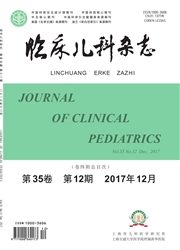

 中文摘要:
中文摘要:
目的:探讨烧伤后增生性瘢痕患者血清中TGF-β、VEGF浓度变化及意义.方法:选择2009,8~2011,8我科住院的烧伤后增生性瘢痕患者共74例,根据创面愈合后瘢痕增生时间长短分组,分为4组,选择12例正常人作为正常对照组,共5组.用酶联吸附法(ELISA)检测患者血清中TGF-β、VEGF的浓度,5组之间统计比较分析.结果:瘢痕患者血清中TGF-β、VEGF含量与瘢痕增生时段关系密切,1~3月早期瘢痕组血清中TGF-β、VEGF含量开始增加,随瘢痕的发展升高,4~6个月瘢痕组血清中TGF-β、VEGF含量达到了高峰.随着瘢痕成熟,TGF-β、VEGF浓度又逐渐下降.结论:烧伤后增生性患者血清中TGF-β、VEGF的含量可较好地反映增生性瘢痕代谢活跃程度,是增生性瘢痕增生活跃程度敏感的标记物.
 英文摘要:
英文摘要:
Objective To explore the dose and its clinic significance of profibrotic cytokines of TGF-βand VEGF in the serum of hypertrophic scar patients at excessive stages.Methods Collected serum samples of 74 inpatients admitted in our hospital between 2009,8 and 2011,8 suffering from post-burned hypertrophic scars at various stages.Serum samples of 12 cases of healthy persons were also collected as control group.Hypertrophic scar group were divided into 4 subgroups according to the phase of scars and detected the concentrations of TGF-βand VEGF in serum of the trials using the ELISA method.Results The doses of TGF-βand VEGF began to increase in 1 to 3 months hypertrophic scar group and achieved summit concentration in 4 to 6 months scar group.The concentration of TGF-β and VEGF degreased gradually with the maturation of hypertrophic scars Conclusions High concentration of TGF-βand VEGF in the serum can reflect the level of metabolic activity in the tissue of hypertrophic scars.TGF-βand VEGF may be one promising marker in discerning the growth and development of hypertrophic scars.
 同期刊论文项目
同期刊论文项目
 同项目期刊论文
同项目期刊论文
 期刊信息
期刊信息
